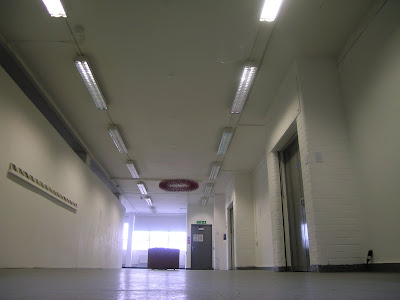Home
and Away
Curated by: Ting-Ting Cheng
Venue: ISE Cultural Foundation
555 Broadway, New York NY 10012
Date: 4 Nov - 31 Dec 2011
Private view: Fri, 4 Nov, 6pm – 8pm
“Why do people travel? What does it mean to be away from 'home'? Does our idea of 'home' change and transmute the more we travel, or does it perhaps only come into existence when we leave the physical reality behind? Can we ever simply and un-problematically 'return home' after our travels, and will it be the same 'home' we left? How do we negotiate between our past spatial memories and the new geographical locations we find ourselves in? Last but not least, can we ever really experience a new place for the first time, outside its familiar representations in maps, guidebooks, films, and news programs?” Ting Ting Cheng
At the private view evening
‘Home and Away’, an exhibition I took part in
New York at the ISE Cultural Foundation,
negotiates what the idea of ‘home’ means when living in an era that is increasingly
globalisation. The exhibition features works by six other international artists
including Ting-Ting Cheng, Chu Yin-Hua, Barney & Lucy Heywood, AlexandraWolkowicz, and Joanna Zylinska who experienced living and working outside their
homeland. They use photography, video, and installation ‘to discuss poignant
questions about spatial identity, geographical belonging, and the passage of
time’, said curator of the exhibition Ting Ting Cheng who studied and working
abroad for many years. Linking it to politic, economic and personal encounters the
exhibition offers a poetic reflection on the movement of bodies and minds
across geographical and cultural boundaries in the age of globalization.
Curator Ting Ting Cheng discussing the exhibition
My work Every Corner of My Flat is being selected for the exhibition. Started
in 2009 and ongoing, I use photography to document the process of removing the
dust in my studio flat. The process allows me to observe and re-familiarise
with myself as I recollect my life whilst going through my own physical and
personal belongings in my own home. Engaged with the distant, recent and
immediate past, the piece is
concerned with the relationship between objects, space, man and his behaviour
and how they influence each other. It reflects the way a space can affect its
inhabitant and how we arrange our living spaces to suit our needs. The idea can
be expanded to my own experience where I had to adapt and adjust my life in a
very different and unfamiliar cultural environment when I arrived in the UK
back in 1994. Contradictorily, after years of living in the UK, I have to
re-adjust myself to adapt to my own cultural environment whenever I visited my
homeland, in which I found myself caught in the notion of strange and familiar
within these two ‘homes’.

My work Every Corner of My Flat
I consider
that the piece is one of many potentials to ‘draw a portrait’ of a person, or
to describe the character of his habitant space. The endless repetitive and
accumulative activities manifest a sense of infinity and meditative process
that reflects in some of my work. Every
Corner of My Flat embarked on the idea of a habitant home but along the way
I made connection with my inner home, a mental landscape.
Alexandra discussing her work
The exhibition also includes
a Q&A session (Sat 5 Nov, 6 - 8pm) to open the debate to the audience, asking for
their memories, recollections, and accounts of both "home making" and
"art making" in a global and local context.
I am discussing my work
























































































